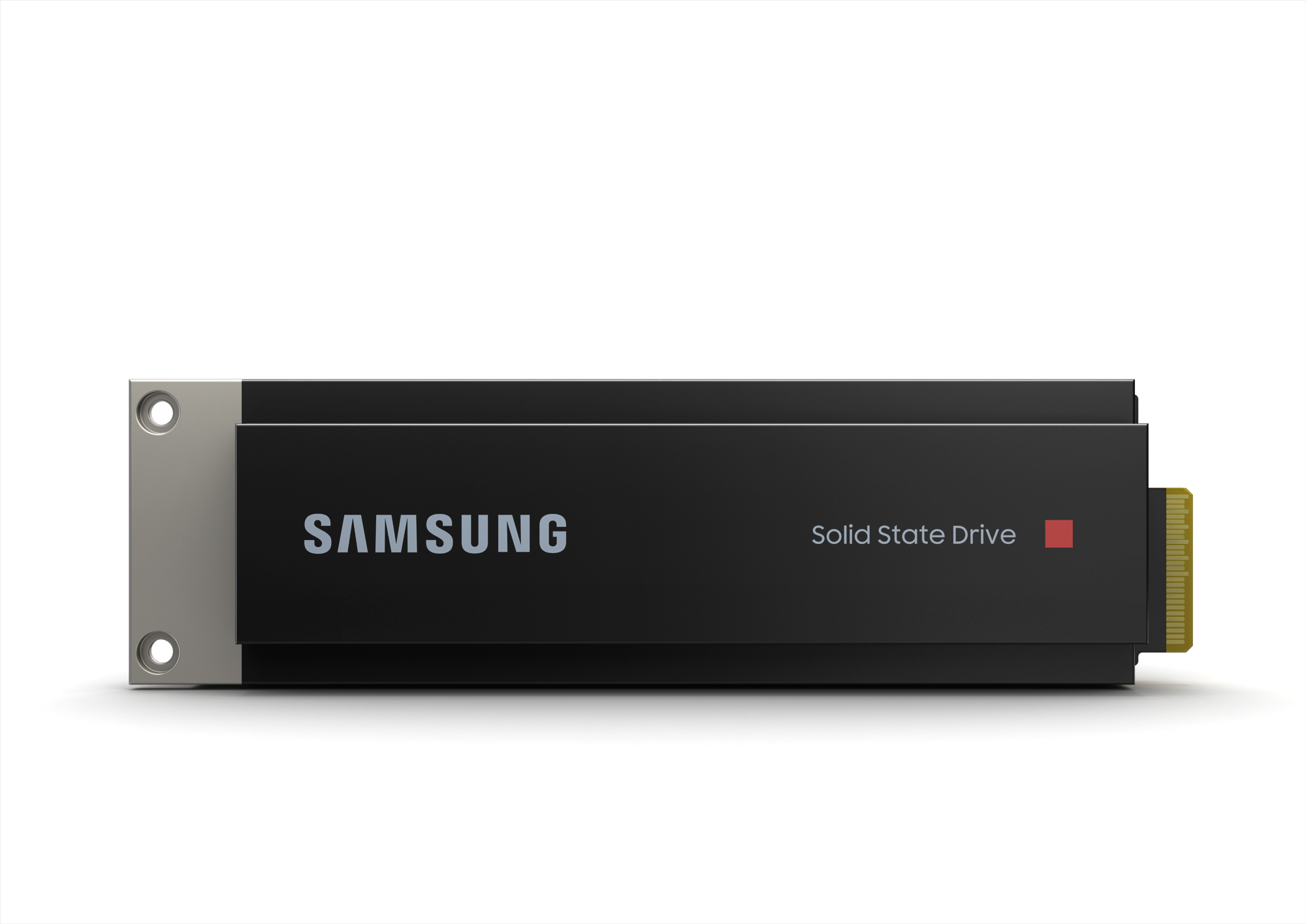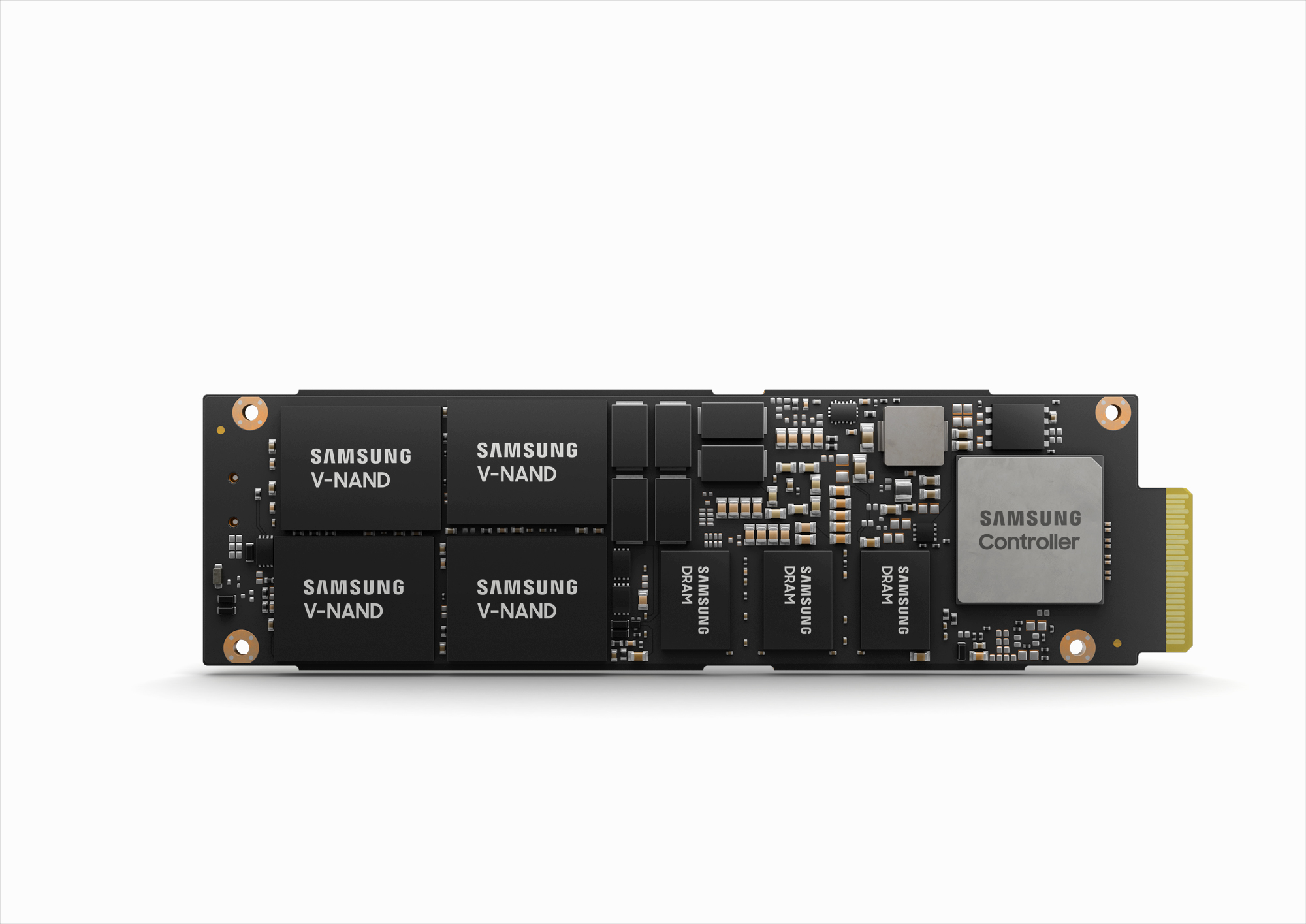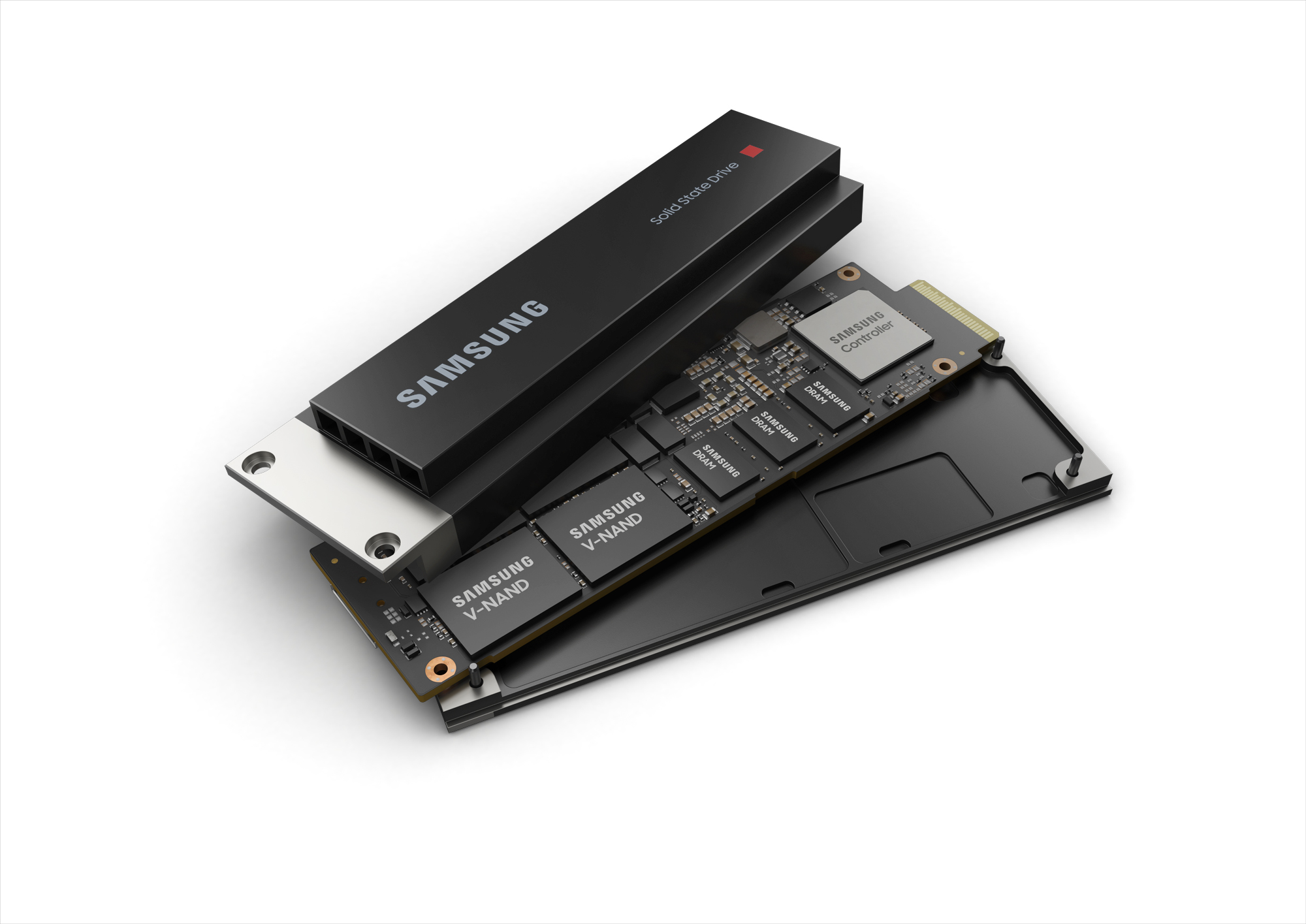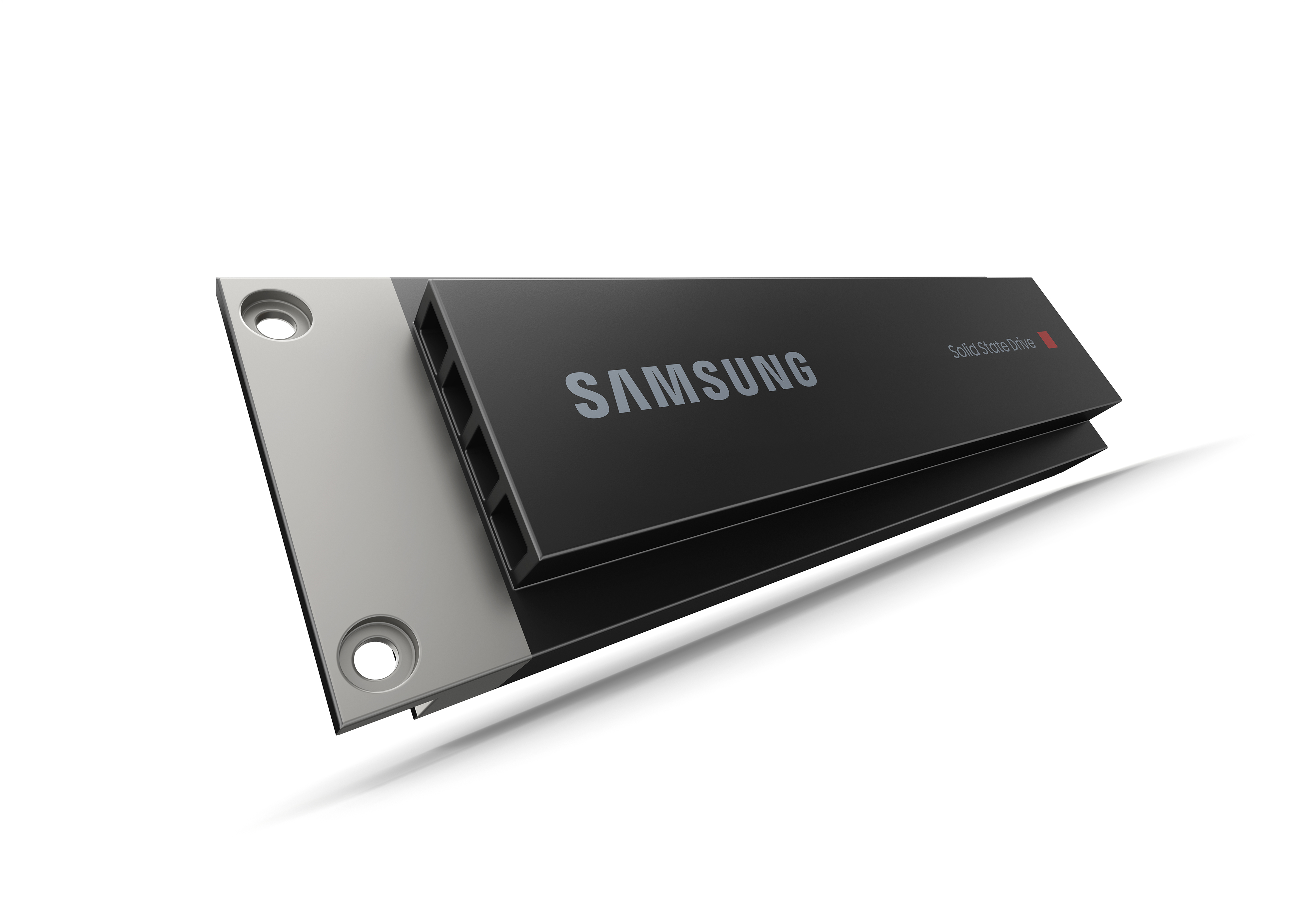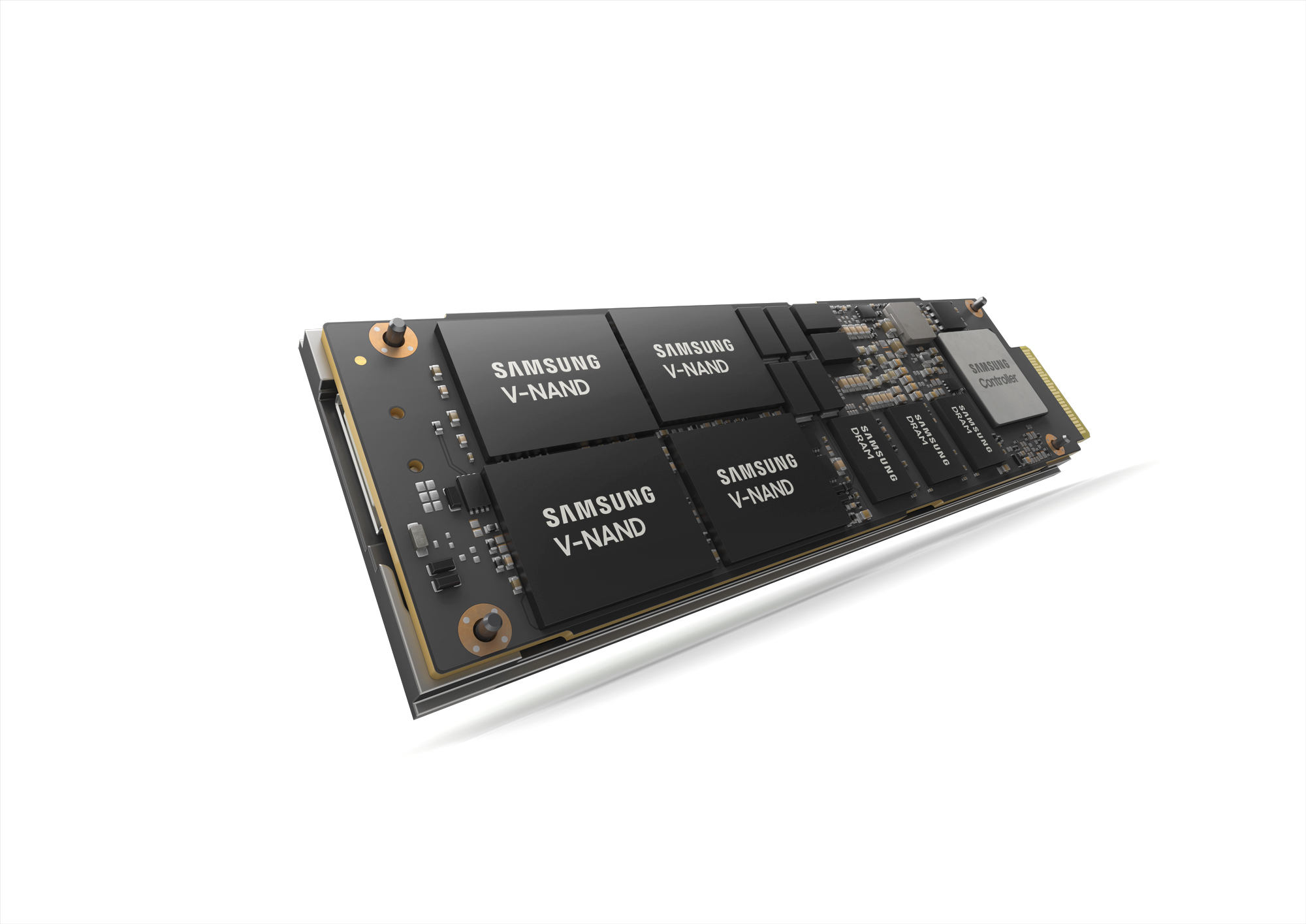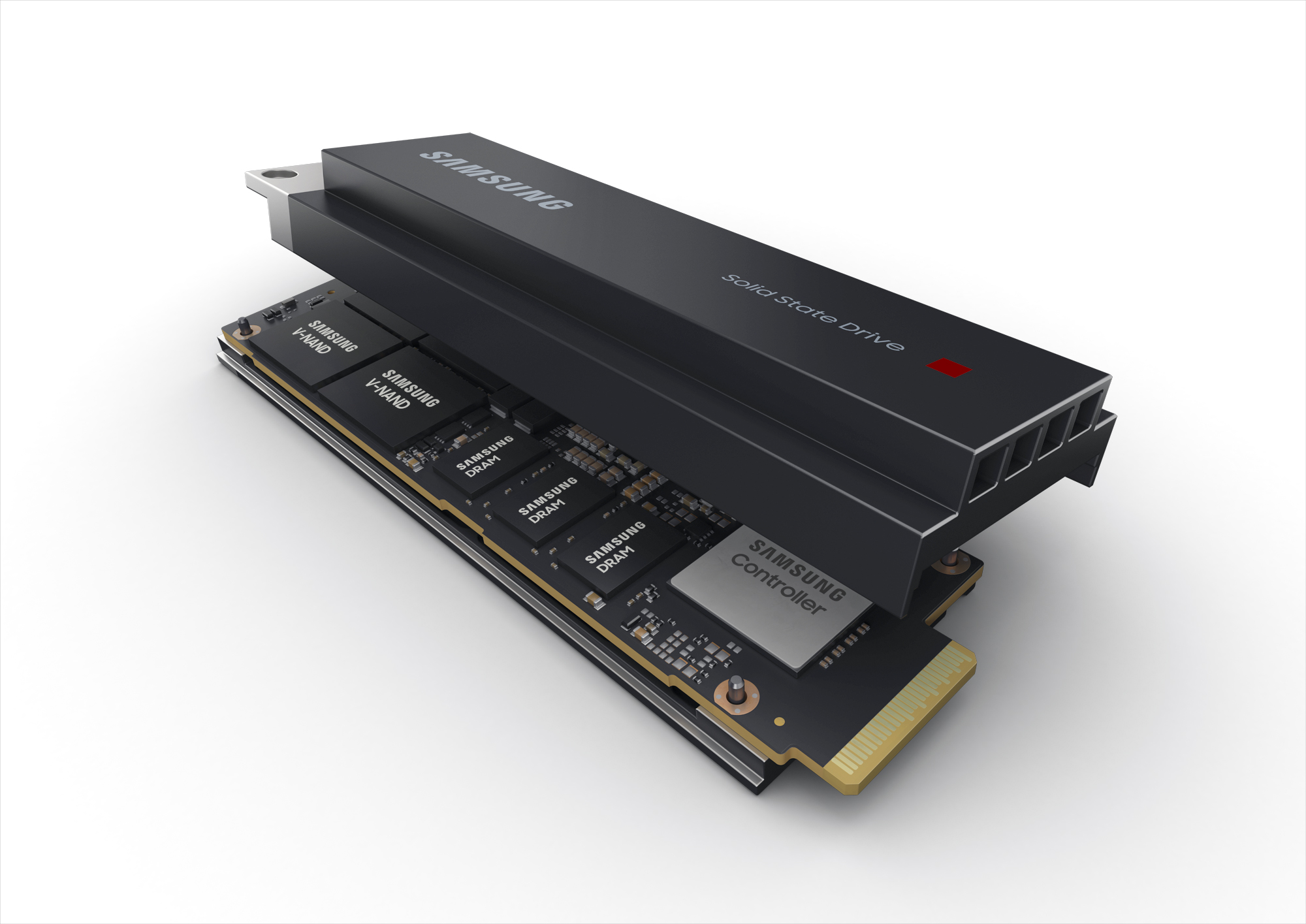Samsung Begins Mass Production of Data Center SSD Customized for Hyperscale Environments
Korea on February 24, 2021
Industry-first data center SSD that is compliant with the latest OCP standards
Offers superior performance, power efficiency and reliability,
as well as additional security to handle enterprise workloads
Samsung Electronics, the world leader in advanced memory technology, today announced that it has begun mass producing its most advanced line of data center SSDs, the PM9A3 E1.S.
The new PM9A3 fully complies with the Open Compute Project (OCP) NVMe Cloud SSD Specification to satisfy the rigorous demands of enterprise workloads. Defined by leading data center providers including Facebook, the OCP Specification is a set of unified interoperable standards, enabling SSD vendors to work toward next-generation storage designs with much more effectiveness.
“Wider 5G deployment and accelerating growth in IoT devices are fueling a hyperconnected lifestyle, driving the demand for more sophisticated hyperscale data centers,” said Cheolmin Park, vice president of Memory Product Planning at Samsung Electronics. “Providing an optimal mix of performance, power, reliability and firmware, we believe our new PM9A3 will help advance today’s data center storage technologies and expand the market for OCP-compliant SSDs.”
“Innovations such as the OCP NVMe Cloud SSD and E1.S are important to solving today’s data center challenges. The OCP NVMe Cloud SSD Specification defines hyperscale SSD requirements, enabling SSD makers to provide leading-edge products that meet the challenging demands of hyperscale environments. Deploying storage at scale is very challenging and Samsung’s support for next-generation industry-leading technologies such as the OCP NVMe Cloud SSD and EDSFF E1.S is a great step forward,” said Ross Stenfort, Hardware Storage Engineer at Facebook.
Built with the company’s sixth-generation (1xx-layer) V-NAND, the PM9A3 dramatically improves performance over the fifth-generation V-NAND-based PM983a (M.2), with double the sequential write speed at 3000MB/s, a 40% higher random read speed of 750K IOPS and 150% higher random writes at 160K IOPS.
Power features are critical to maximizing the efficiency of data center operations. The PM9A3 provides superior power efficiency at 283MB/s per watt for sequential writes, making it nearly 50% more energy efficient than the previous generation’s 188MB/s per watt. In fact, replacing all server hard disk drives (HDDs) launched in 2020 with the PM9A3 4TB drive would save 1,484 gigawatt hours (GWh) of energy, which is enough electricity to power all households in a major metropolitan city during a summer month.*
The PM9A3 also comes in nine power levels to suit a diverse range of SSD form factors and interfaces — from 8.25 watts for the M.2 form factor to 35W for newer form factors such as EDSFF.
In addition to standard security features such as user data encryption and authentication, the new drive is equipped with secure boot and anti-rollback mechanisms to ensure robust data protection. Secure boot adds another layer of protection against unauthorized firmware being used, while anti-rollback prevents the drive from rolling back or downgrading to an older flawed version of the firmware.
Samsung will continue to work closely with its data center partners to standardize advanced storage technologies, and facilitate the development of more cutting-edge memory solutions.
* Editor’s note: based on a total of 1,412 GWh of electricity consumed by households in Seoul, Korea, during August 2020


